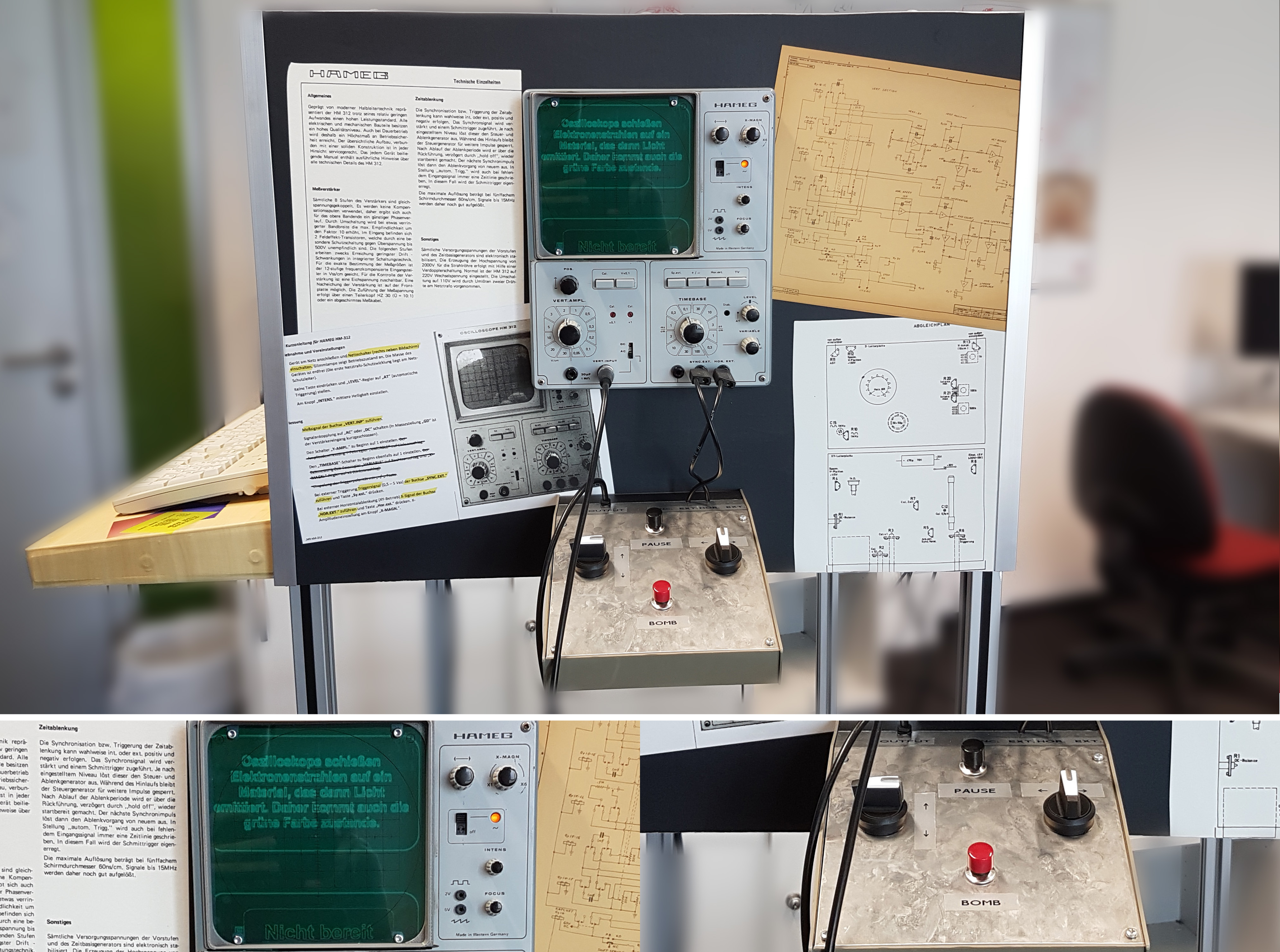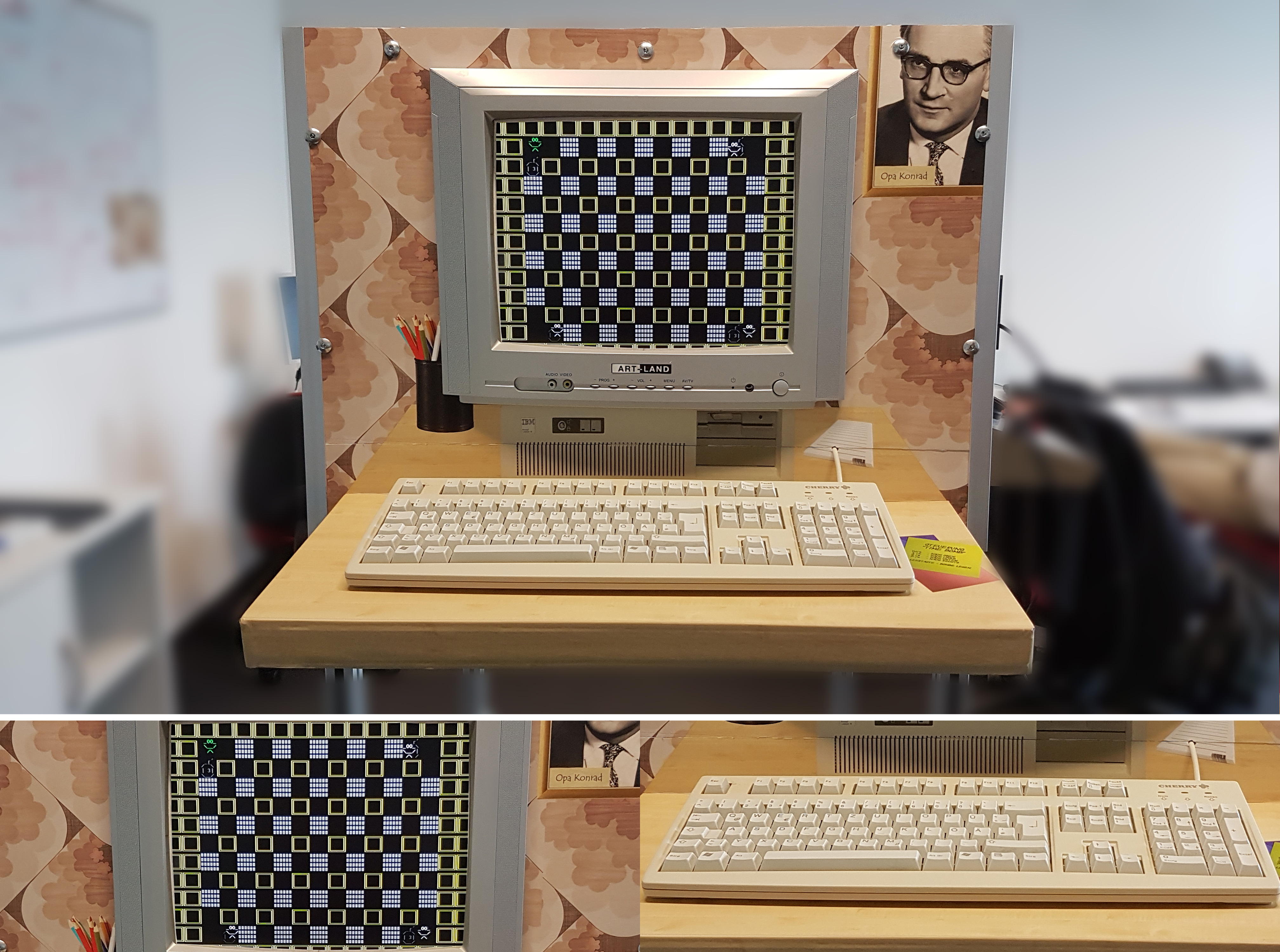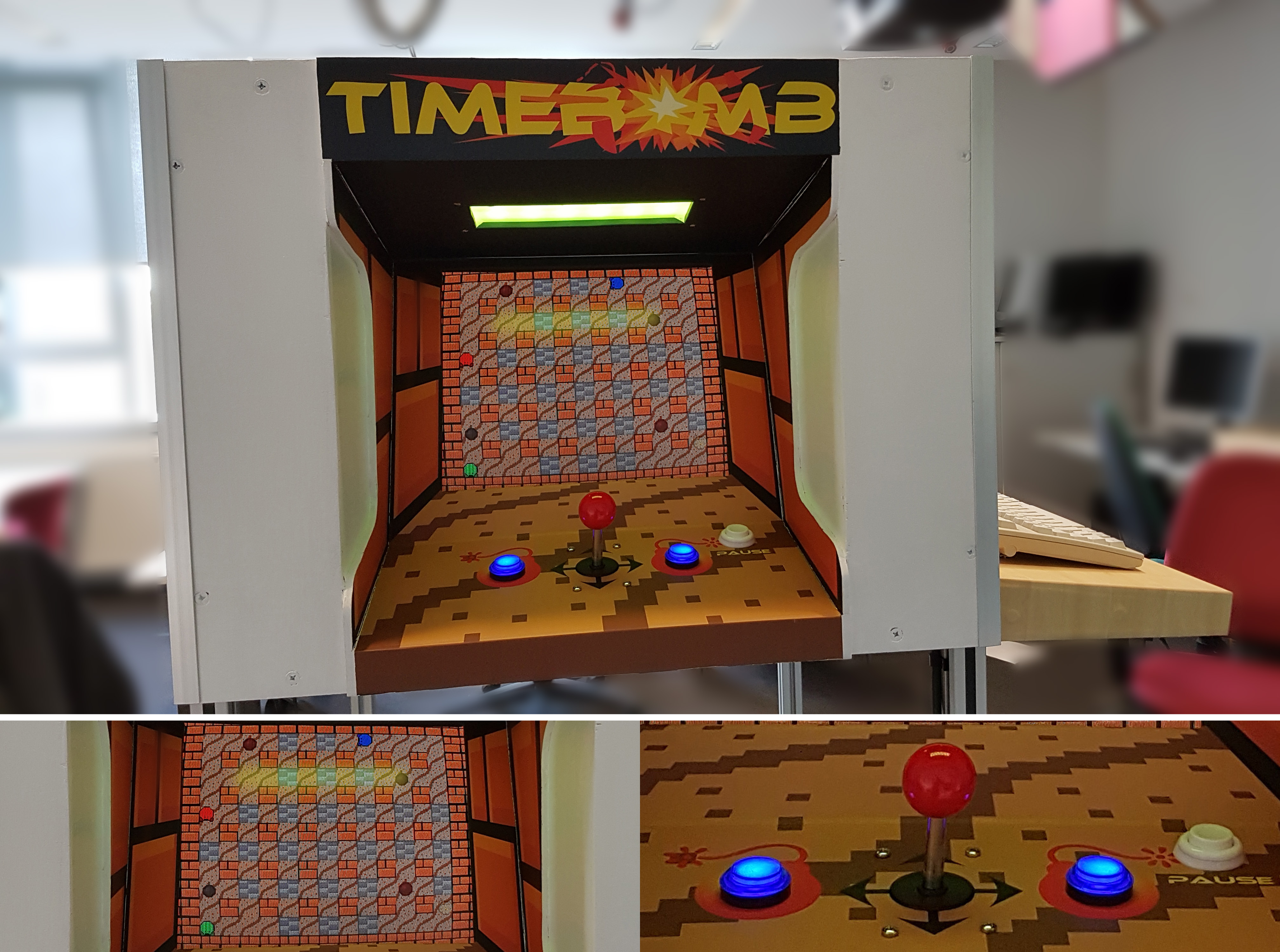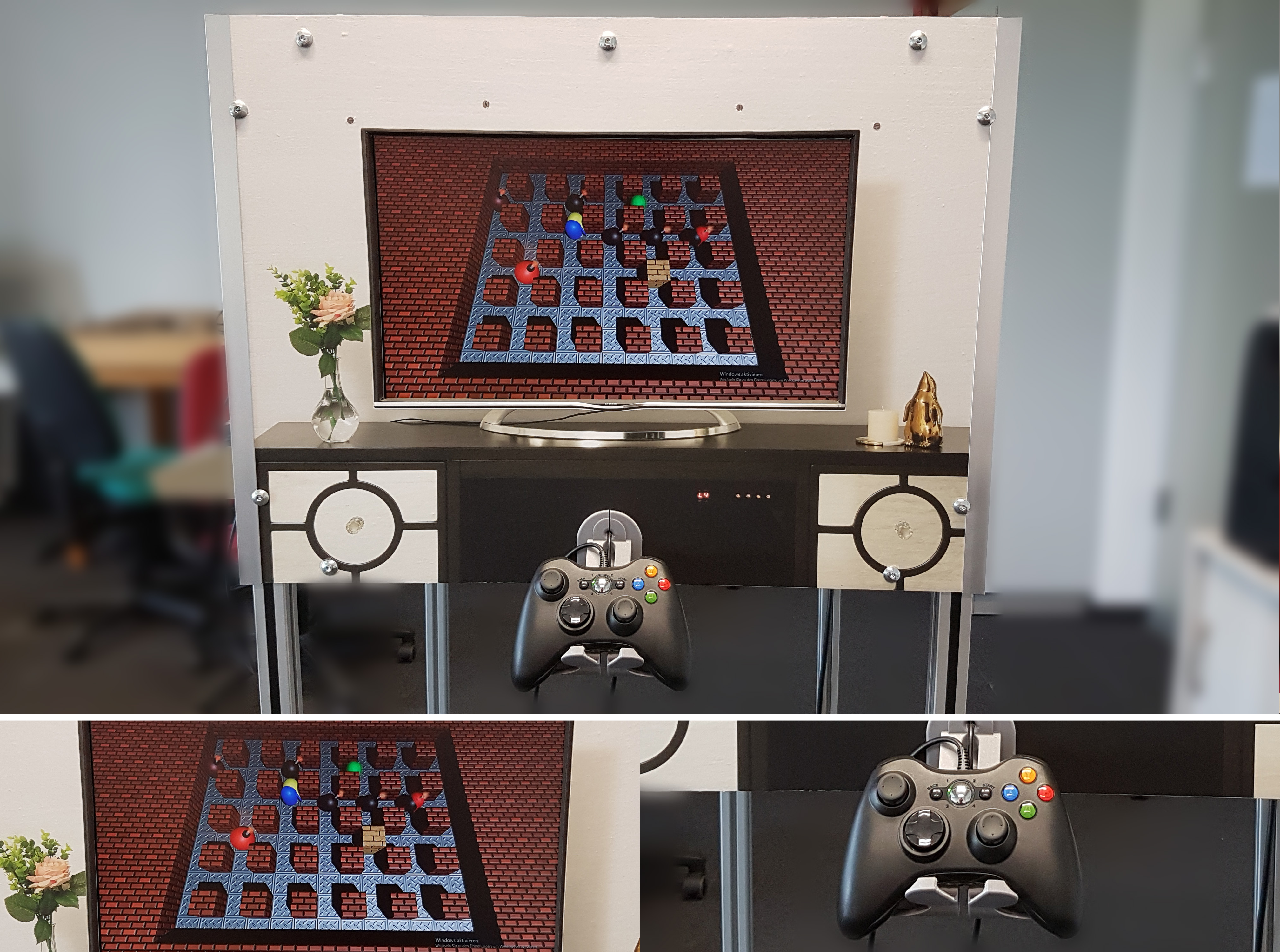In 2018, I completed a special course at university. At least half of my master’s studies consisted of bigger project work done in groups. For this particular project, I joined forces with three friends of mine. We had the task to create an exhibit for a fair at our faculty in spring 2019. It should present the history of computers to the visitors. We decide to amend this task a bit and tried to create an exhibit about the history of computer games, as we began developing games in our free-time around 2 years earlier. In the end, this became one of my most prestigious projects so far and it was also one of the most fun to do.
TimeBOMB is an interactive game station that enables players to experience the history of computers and video game development. They compete playing an adaption of the classic game Bomberman. Each of the four sides of the station represents a different time period with corresponding input and output modalities. They consist of an oscilloscope interface with self-made, analog control dials, a text-based interface controlled by a keyboard, a 2D arcade interface controlled by a joystick, and a 3D interface controlled by a gamepad. These four styles resemble iconic examples from the history of computer games. The game’s art style also differs for each side accordingly.
Time Periods
Our exhibit TimeBOMB consists of a cuboid game station, which enables up to four players to compete in an adaptation of the classic game Bomberman. The following sections describe in detail the significance of each represented time period and the dedicated input and output modalities.
Oscilloscope – 1950s

The first side is inspired by the iconic “Tennis for Two”, one of the oldest known video games, which was presented in 1958 in New York. It simulates a game of tennis on an old oscilloscope.
TimeBOMB mimics the input and output conditions of this classic game. A small screen, housed in the body of a real oscilloscope, displays the game scene with monochrome green vector graphics and afterglow, typical for this time period.
The input is strongly inspired by the original Tennis for Two controllers and consists of two knobs to control vertical and horizontal movement, and a push-button to place bombs. This creates an experience that strongly resembles the limited technical possibilities at that time.
Text-based – 1970s

The next significant period TimeBOMB addresses are text-based interfaces, especially text-based games like the famous Rogue, which became an eponym for a whole genre.
For this period, the display shows ASCII characters in a fixed grid, which have one of four colors. These characters are combined to form shapes resembling the player avatars and the environment. The display is housed in the frame of an old CRT-monitor.
The game is controlled by a keyboard, with four buttons dedicated to movement and one to place bombs.
Arcade – 1980s

Another important period in the history of video games are arcade halls, dedicated stores filled with several coin-operated cabinets, and a large variety of games.
The third side of TimeBOMB is dedicated to closely resemble one of those cabinets. The game is presented in colored 2D sprites common for that time period. Each pixel is split into red, green, and blue channels and a scanline and a screen curvature effect are added to invoke the impression of an old CRT monitor.
The input is handled by a large arcade joystick and push buttons, resembling typical arcade machine designs.
Modern – 2000s

The final side of the station is based on recent home entertainment systems, designed to resemble a living room TV setup.
The 16:9 display shows a full 3D representation of the game, including lighting, particle effects, and detailed textures.
The game is controlled with a modern Xbox gamepad, using an analog stick for movement and one of the buttons to place bombs. This setup of TimeBOMB is most likely familiar to the players and demonstrates the tremendous development of computers and video games since their humble beginnings.
Construction
While my mates were mainly engaged in the software part of the project, I took care of the hardware construction of the exhibit itself. With only view tools and lots of manual work, I build a wooden corpus around a sturdy frame made from aluminum extrusions. Old monitors are combined with a modern PC (including a powerful graphics card) to enable the four views of the station. The outside of the box was then covered in vinyl wrapping custom printed with images designed by myself to improve each side’s appearance.
Presentation
As intended, the game station was first presented to the public at the fair in our faculty in June 2019. As it received a lot of positive reviews, it became part of a special exhibition in a museum in Dresden right afterward. There it was presented to the public until the pandemic started in 2020. In between, the device was presented by us at different fairs and contests.
Awards & Echo
We submitted our project to several contests for young creators in 2019. The juries always valued the creativity and implementation of our projects so we were always rewarded.